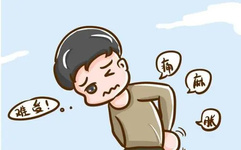Bloodletting therapy is a form of acupuncture technique, specifically the “pricking method” mentioned in the “Neijing” (Inner Canon). It involves using a three-edged needle or a thick needle to puncture the collaterals, allowing a small amount of blood to be released. This process helps expel internal heat and toxins, achieving effects such as clearing heat and detoxifying, reducing swelling and pain, dispelling wind and itching, opening orifices and releasing heat, promoting circulation, and calming nausea and diarrhea, thereby serving the purpose of disease prevention and treatment.

Mechanism of Action
The mechanism of bloodletting therapy is to adjust yin and yang, unblock the meridians, and harmonize qi and blood, thereby changing the pathological changes of qi and blood flow obstruction in the meridians, which helps to regulate the functions of the internal organs.
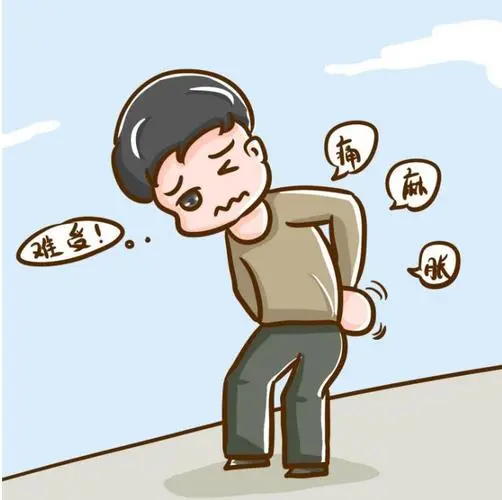


Main Clinical Effects
1. Pain Relief
The most prominent therapeutic effect of bloodletting therapy is pain relief, such as for neuralgia, joint pain, and sciatica. After bloodletting, pain can significantly diminish or disappear. Traditional Chinese Medicine (TCM) holds that “pain indicates obstruction”; when qi and blood flow is abnormal, it leads to qi stagnation and blood stasis, causing blockage in the meridians and resulting in pain. Bloodletting can unblock the stagnation of qi and blood in the meridians, changing the pathological changes of qi stagnation and blood stasis, thus achieving the principle that “when unblocked, there is no pain”.
2. Heat Dispelling
Bloodletting can reduce fever; ancient medical texts record the practice of “dispelling heat through bloodletting”. There are many causes of fever, but generally, bloodletting is particularly effective for exogenous fever and yang excess fever. After bloodletting, it can promote the expulsion of pathogenic heat or reduce the heat in the blood, restoring the balance of yin and yang in the body and thus reducing fever.
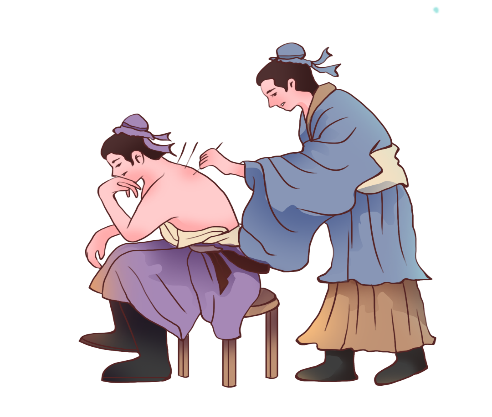
3. Swelling Reduction
Swelling and pain in limbs caused by trauma are often due to qi stagnation and blood stasis, leading to blockage in the meridians. Bloodletting can unblock the stagnation of qi and blood in the meridians, allowing the local injury to have smooth qi and blood flow, thus alleviating swelling and pain.
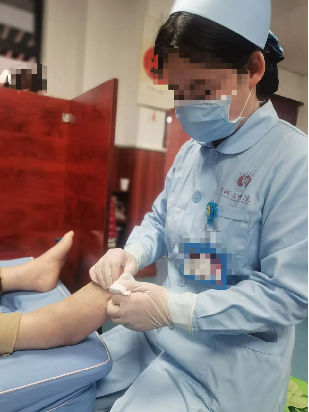
4. Numbness Relief
Qi deficiency can prevent blood from reaching the extremities, or blood deficiency can fail to nourish, often resulting in numbness. Using a fine needle to prick the acupoints on the affected limb to release a small amount of blood is guided by the theory of promoting blood flow to qi, yielding good results.

5. Sedation
Bloodletting has a calming effect, and clinical observations have noted its effectiveness in treating manic-type schizophrenia, insomnia, hysteria, tetanus, epilepsy, and other conditions. This effect may be achieved by regulating blood and qi, unblocking the meridians, and restoring normal physiological functions.
6. Wind Dispelling and Itch Relief
Itching is a manifestation of wind evil present in the blood vessels; thus, the treatment principle is “to treat wind, first treat blood; when blood flows, wind will naturally dissipate”. Bloodletting regulates blood and qi, ensuring smooth blood flow, thereby eliminating wind evil and relieving itching.
7. Emergency Treatment
This refers to sudden fainting or convulsions where the patient is unresponsive. Bloodletting can improve blood circulation and awaken consciousness, serving as an effective emergency method.

Instruments for Bloodletting Therapy
1) Ancient Sharp Needle
“Lingshu: Theory of Nine Needles”: “Sharp needle… is used for abscesses and heat to induce bloodletting.”
2) Modern
Thick needles, plum blossom needles, skin needles, surgical sharp knives, injection needles, blood collection needles, etc.
Preparation Before Needling
Needle selection: Choose different needles based on the condition and the site of operation.
Positioning: Select a suitable position based on the condition, ensuring patient comfort and ease of operation for the practitioner.
Environmental requirements: Clean and hygienic to avoid infection.
Disinfection: Needle disinfection: high-pressure sterilization or use of disposable needles.
Site disinfection: iodine or medical alcohol.
Practitioner disinfection: it is recommended to wear disposable sterile gloves.

Operational Methods
1. Point Pricking Method
Definition: This method involves pricking acupoints to induce bleeding or release a small amount of fluid.
Operation: Before pricking, press the area above and below the acupoint with fingers to accumulate blood at the pricking site. After routine disinfection, use the left thumb and index finger to stabilize the pricking site, and with the right hand, quickly insert the needle 2-3 mm and withdraw it quickly. After pricking, use a method of alternating pressure and release at the needle hole to allow a few drops of blood to flow out or to express a small amount of fluid. Use a cotton ball to promptly wipe away the blood or fluid. To achieve a certain amount of blood or fluid, the depth of the prick should not be too shallow.
Site: Commonly used on the tips of fingers and toes, face, and ears, such as Jing points, Shixuan, Yintang, Cuanzhu, ear apex, and Sifeng.
Indications: Often used for fainting, high fever, stroke closure syndrome, and acute throat swelling.
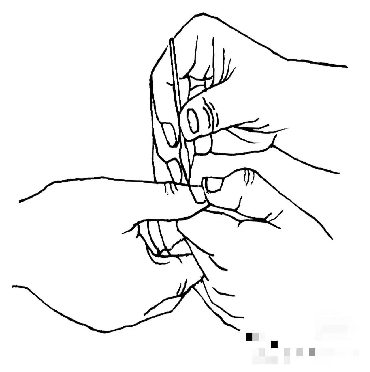

2. Collateral Pricking Method
Definition: This method involves using a three-edged needle to puncture specific acupoints to release an appropriate amount of blood, or to puncture deeper, larger veins to release a certain amount of blood.
Operation: First, use a rubber band to tie the upper end (proximal end) of the puncture site to make the corresponding vein more visible. After local disinfection, press the lower end of the puncture site with the left thumb, and with the right hand, angle the three-edged needle towards the obstructed vein and quickly withdraw it. The depth of the needle should be such that the needle tip reaches the “zhongying” (middle of the channel), allowing blood to flow out naturally. Release the rubber band, and after bleeding stops, apply pressure with a sterile dry cotton ball at the needle hole and clean the surrounding blood with a 75% ethanol cotton ball.
Site: This method typically results in a larger volume of blood and is often used on veins in the elbow pit and popliteal fossa.
Indications: Commonly used for heat stroke, fever, and acute vomiting and diarrhea.
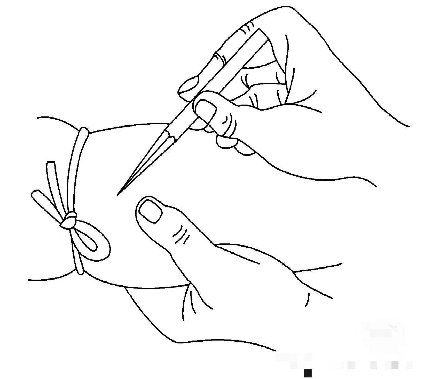

3. Scatter Pricking Method
Definition: This method involves multiple pricks with a three-edged needle at specific locations. It is a technique of continuous pricking around the lesion area to treat diseases.
Operation: After local disinfection, based on the size of the lesion, perform continuous vertical pricking of 10-20 needles or more, pricking from the outer edge of the lesion towards the center to promote the expulsion of stasis heat, edema, and pus.
Indications: For conditions such as stubborn skin diseases, initial abscesses, and localized swelling from sprains.
Indications: Commonly used for erysipelas, abscesses, stubborn skin diseases, and localized sprains.
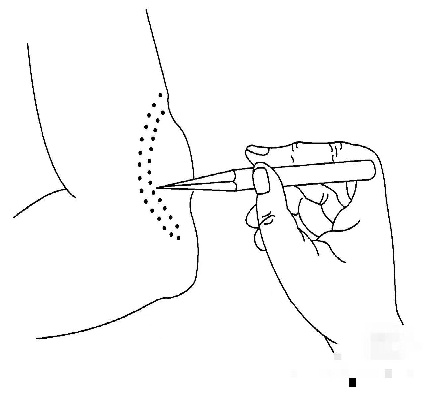
4. Lancing Method
Definition: This method involves inserting a three-edged needle into specific areas of the body to break the skin or subcutaneous tissue.
Operation: Use the left hand to press the sides of the treatment area or pinch the skin to stabilize it. With the right hand, quickly insert the needle 1-2 mm into the skin, then tilt the needle to break the skin, allowing a small amount of blood or fluid to flow out. Alternatively, insert the needle about 5 mm deep, tilt the needle, and gently lift the tip to break the underlying fibrous tissue, then withdraw the needle and cover the area with a dressing.
Indications: Commonly used for back shu points and disease reaction points.
Indications: Often used for vascular headache, shoulder periarthritis, stomach pain, cervical spondylosis, insomnia, and bronchial asthma.


Blood Volume Requirements
In bloodletting therapy, the amount of blood drawn directly relates to the effectiveness of the treatment. In principle, it is determined by the following factors.
1. Based on the patient’s constitution: Strong individuals may have a slightly larger volume of blood drawn, while weaker individuals should have less.
2. Based on the characteristics of the disease: For short-term, mild, or superficial diseases, less bloodletting is advisable; conversely, for severe conditions, more bloodletting may be necessary. For example, in treating mania, a larger volume of blood is often drawn. Yang conditions, excess conditions, heat conditions, and new diseases typically require more bloodletting; while yin conditions, deficiency conditions, and chronic diseases should have less.
3. Based on the site of bloodletting: Blood drawn from the jing points of the limbs is generally less, while blood drawn from the collaterals often results in a larger volume.

Precautions and Contraindications
1. For patients with a large volume of bloodletting, ensure proper explanation is provided.
2. Strict disinfection is required to prevent infection.
3. During operation, the technique should be gentle, steady, precise, and quick; avoid excessive force to prevent deep punctures or excessive trauma, which could damage other tissues, and avoid injuring arteries.
4. To enhance efficacy, ensure adequate bloodletting; cupping can be applied immediately after needling.
5. Bloodletting treatment is generally performed once every 2-3 days; for those with a larger volume of blood drawn, it can be spaced 1-2 weeks apart.
6. Avoid arterial blood vessels; if an artery is accidentally injured and a hematoma occurs, apply pressure with a sterile cotton ball to stop the bleeding.
7. During treatment, ensure the patient’s position is comfortable to prevent fainting.
8. Use with caution in patients with severe illness, weakness, anemia, low blood pressure, pregnant women, and postpartum individuals. Patients with bleeding tendencies and vascular tumors should not use this method.

Clinical Practical Application
1. For headaches and colds, select the acupoints Dazhui and Taiyang. Use a three-edged needle to prick Dazhui 3-5 times, apply cupping, resulting in approximately 5-10 ml of blood. For Taiyang, prick 2-3 times, apply cupping, resulting in about 2-5 ml of blood. For ear apex, prick and express about 5-10 drops of blood.
2. For children’s throat pain and fever, bloodletting can be performed at the acupoints Shangsang and Shangyang. Pinch the fingertip and quickly prick to express about 5 drops of blood.
3. For lumbar diseases, bloodletting can be performed at the acupoints Weizhong, focusing on the blood collaterals, pricking to express about 10-20 ml of blood after cupping at the acupoint Yaoyangguan 3-5 times.
4. For limb numbness caused by cerebrovascular diseases, bloodletting can be performed at the acupoints Shixuan on the hands and feet; for tongue stiffness or speech difficulties, bloodletting can be performed at the acupoints Jinjing and Yuye.
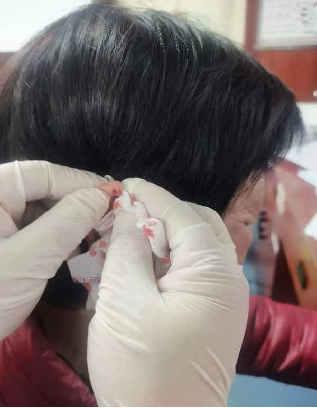

This issue’s article is by Zhang Boxia from the Rehabilitation Department.
Exciting Links1. Report on a case of severe inversion and flexion contracture after total knee arthroplasty at the Orthopedics Department of Shangcheng County Traditional Chinese Medicine Hospital.2. The “Henan Province Traditional Chinese Medicine Regulations” has been implemented for one year as of October 1st.3. The opening ceremony of the second training class for non-TCM physicians to learn TCM was held at Shangcheng County Traditional Chinese Medicine Hospital.4. Shangcheng County Traditional Chinese Medicine Hospital and Beijie Community jointly held the “Our Festival: Mid-Autumn” themed activity.5. The “Winter Disease Winter Prevention” Sanjiu plaster has begun at Shangcheng County Traditional Chinese Medicine Hospital.6. The third batch of experts from Henan University of Traditional Chinese Medicine’s Third Affiliated Hospital has been sent to support the acupuncture, tuina, proctology, and dialysis departments of Shangcheng County Traditional Chinese Medicine Hospital.7. Congratulations! Shangcheng County Traditional Chinese Medicine Hospital has passed the national second-class A-level TCM hospital evaluation.

